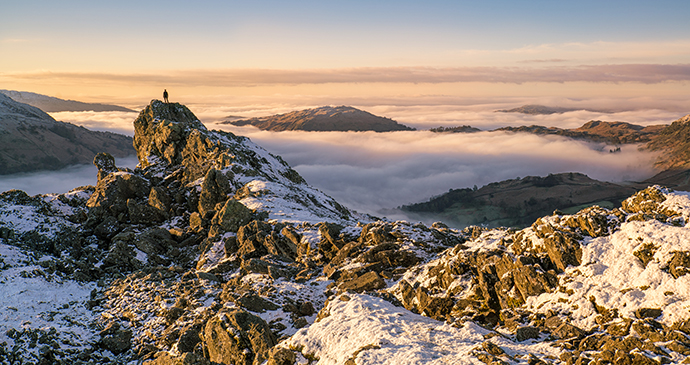Everyone should love mountains as much as me. It’s no secret that I adore high places. Few activities can beat the buzz of being the loftiest living thing for miles around. Investing physical effort in return for world-class views that only those who take the time to clamber up slopes can enjoy is something that I seek out in every bit of free time I get. But I’m going to let you into a secret that few know and many forget… some of the best views, greatest walks and most memorable adventures can be had on small hills. Really.

Many famous mountain walking lists out there are based on height: think of the ‘National Three Peaks’ (the highest mountains in England, Wales and Scotland), the ‘Yorkshire Three Peaks’ (the loftiest three in Yorkshire), the ‘Welsh 3000s’ (all 14 mountains in Wales over 3,000ft/914m) and the Munros (the 282 peaks in Scotland that are over 3,000ft/914m with a specified amount of prominence on all sides). This might make you doubt that smaller peaks can be any good.
But those who shun peaks based on their vital statistics are truly missing out. Small absolutely can be beautiful. For a start, summit views can be fantastic on shorter peaks. And there’s a whole host of other reasons to check them out:
1. You can take as long as you want over small peaks. A quick fix after breakfast, something to do in your lunch hour or an opportunity for fresh air after work? No problem. Or you can take your time, making the walk last a whole day. Small hills are as quick or as slow as you want them to be.
2. Small hills usually enjoy better weather. Clouds (including those pesky ones bursting with rain) often linger around the highest thing around.
3. Practise on small hills will make taller ones easier. Walking up them helps keep you fit (a regular ascent of even a tiny hill will burn off the calories) but they’re also great for honing skills such as map reading and navigation too.
4. Introduce a friend, partner or child to a small hill first and you will more likely get them interested in doing adventures with you rather than if you try a baptism of fire on a giant mountain.
5. Forget measurements: height really doesn’t matter. What hillwalking is really about is getting outside and exploring some of the beautiful countryside that is (often) right on your doorstep.